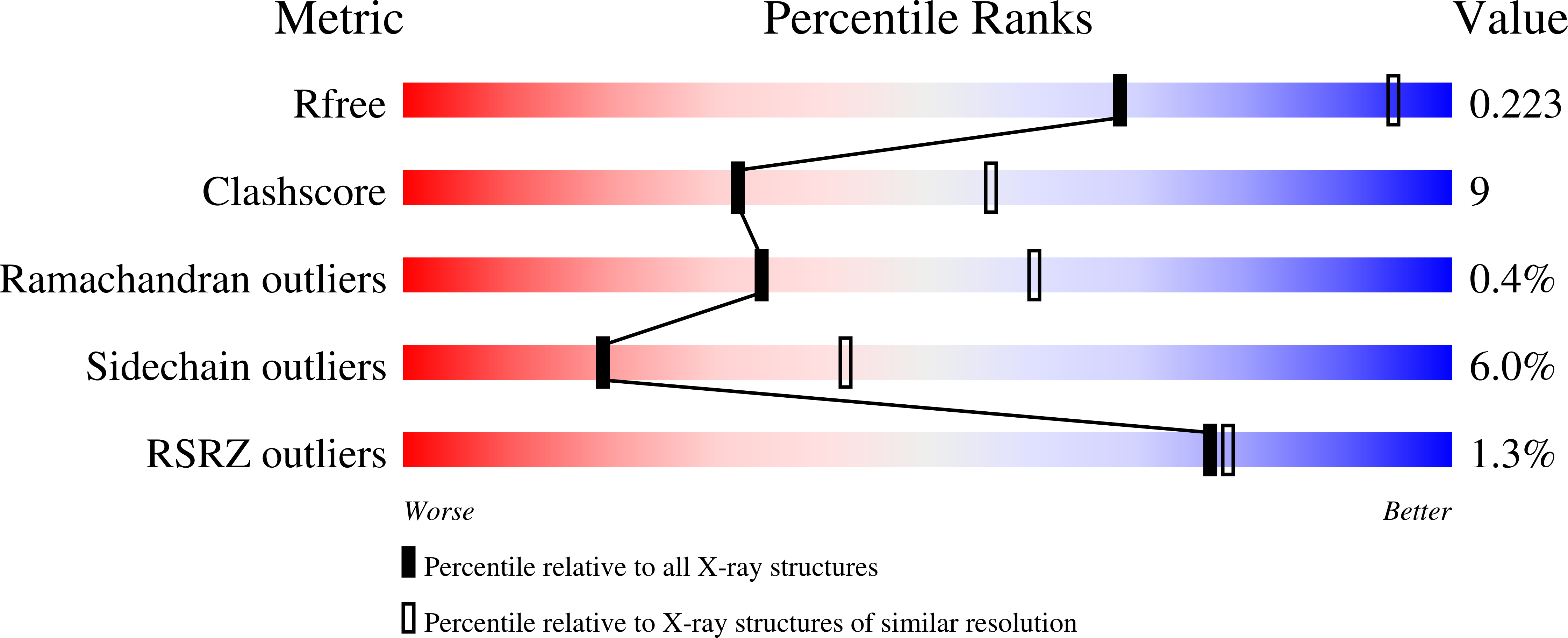Crystal structure of the anti-His tag antibody 3D5 single-chain fragment complexed to its antigen.
Kaufmann, M., Lindner, P., Honegger, A., Blank, K., Tschopp, M., Capitani, G., Pluckthun, A., Grutter, M.G.(2002) J Mol Biol 318: 135-147
- PubMed: 12054774
- DOI: https://doi.org/10.1016/S0022-2836(02)00038-4
- Primary Citation of Related Structures:
1KTR - PubMed Abstract:
The crystal structure of a mutant form of the single-chain fragment (scFv), derived from the monoclonal anti-His tag antibody 3D5, in complex with a hexahistidine peptide has been determined at 2.7 A resolution. The peptide binds to a deep pocket formed at the interface of the variable domains of the light and the heavy chain, mainly through hydrophobic interaction to aromatic residues and hydrogen bonds to acidic residues. The antibody recognizes the C-terminal carboxylate group of the peptide as well as the main chain of the last four residues and the last three imidazole side-chains. The crystals have a solvent content of 77% (v/v) and form 70 A-wide channels that would allow the diffusion of peptides or even small proteins. The anti-His scFv crystals could thus act as a framework for the crystallization of His-tagged target proteins. Designed mutations in framework regions of the scFv lead to high-level expression of soluble protein in the periplasm of Escherichia coli. The recombinant anti-His scFv is a convenient detection tool when fused to alkaline phosphatase. When immobilized on a matrix, the antibody can be used for affinity purification of recombinant proteins carrying a very short tag of just three histidine residues, suitable for crystallization. The experimental structure is now the basis for the design of antibodies with even higher stability and affinity.
Organizational Affiliation:
Biochemisches Institut, Universität Zürich, Winterthurerstrasse 190, CH-8057 Zurich, Switzerland.















